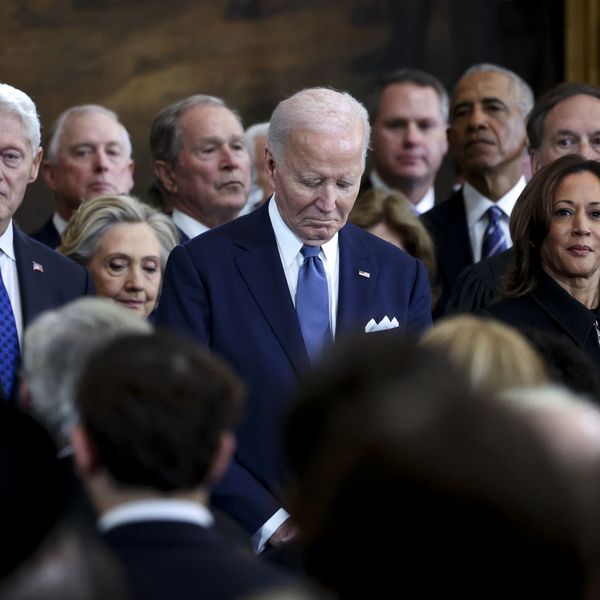Much as we might wish that the anachronistic Electoral College would just go away, it won't. At least not in time for this November's presidential election, anyhow. Which means we need to take a hard look at the electoral map and consider the implications of the fact that the main electoral strength Hillary Clinton has demonstrated thus far lies in states that, unfortunately, are almost certain to go Republican this fall.
Up to this point, eleven states that went for Mitt Romney in 2012 have held their Democratic primaries or caucuses. Clinton has won eight of them, gaining 471 delegates to 236 for Sanders. Of the ten "blue state" races held thus far, Sanders has won six, with a 311 to 287 delegate lead. The entirety of Clinton's current 758 to 547 elected delegate lead, then, comes from "red states." The votes of red state delegates count in the Democratic presidential nominating convention, of course, but the unfortunate realities of our electoral system suggest that the actual voters from those states will not be able to have an impact on the November outcome, since all of the red states that have voted thus far, and given Clinton her delegate lead, have gone Republican in November in each of the last four presidential elections.
Now, for voters in the upcoming caucuses and primaries who are committed to Clinton on the issues or as a person, all of this will be beside the point. But pretty much everything we've seen thus far suggests that the assertion/belief that she has the advantage so far as electability goes is a central component of the Clinton candidacy. In Iowa, for instance, where Clinton eked out a win, 20% of voters told pollsters that the "candidate quality" that mattered most to them was that the candidate "can win in November." Those voters favored Clinton by 77-17% over Sanders in that poll (Martin O'Malley was still in the race), which would have given the state to Clinton, if reflected in reality..
But perhaps the most pointed example of the question's significance to the Clinton campaign effort came in Massachusetts. A UMass Amherst/WBZ pre-election poll found likely voters there declaring that it was Sanders who "best represents my views on the issues" by a 64-25% margin. 75% also considered him the "most trustworthy," compared to 13% who felt that way about Clinton. And yet she won the poll by a margin quite close to the 1.8% by which she won the state's actual primary vote. Why? In part because 65% thought Clinton was the one who "has the best chance of winning the general election," compared to 29% for Sanders. This suggests that here again, the difference between what people actually wanted and what they felt they had to settle for may have been enough to tip the state to Clinton.
There are two problems here - for Sanders, obviously, but also more generally for the Democrats' prospects in the fall. The first is that it is Sanders who is emerging as the more popular among caucus and primary voters in states that Democrats have carried in any presidential election in this century. The second is that polls continue to show that it is Sanders, not Clinton, who has the better chance of beating Trump (and the other Republicans) in the fall. Polls do generally show Clinton beating the GOP as well, but by smaller margins. And with the Koch brothers pledged to bring $879 million in right wing money into play in this year's federal elections, we probably want to go into this with our strongest candidate. But, you may say, doesn't Sanders huge upset victory in Michigan show that we can't necessarily rely on the predictive power of polls? True that, but the fact remains that there is simply no evidence that it is Clinton who has the better prospects in the fall - except for the mainstream media's feeling that it must be so.
Sanders made the decision to enter the Democratic primary process, after a two-decade congressional career as an independent, because he recognized that in order to have a real chance he had to do so. The results, as we have seen, have been spectacular when compared to most expectations. But there are, of course, drawbacks. The flocking of the super delegates to one of their own, the longstanding Democrat Clinton, is an obvious example (but one that can potentially be undone should Sanders emerge with the greater number of elected delegates). Less obvious is the absence of independents in many of the Democratic races. In some states independents are allowed to vote in Democratic contests and in others not, but overall, of course, their participation is lower. And the principal reason that Sanders shows better than Clinton in November polls appears to be his greater strength with those voters.
At this point, then, we might almost look at the Democratic Party nominating process as something of a bottleneck that Sanders must navigate in hopes of reaching the broader November electorate where he can bring that strength to bear. Our hope for the future must be that primary and caucus voters still to come will recognize that they need not replicate the results of the solid south that voted before them.


